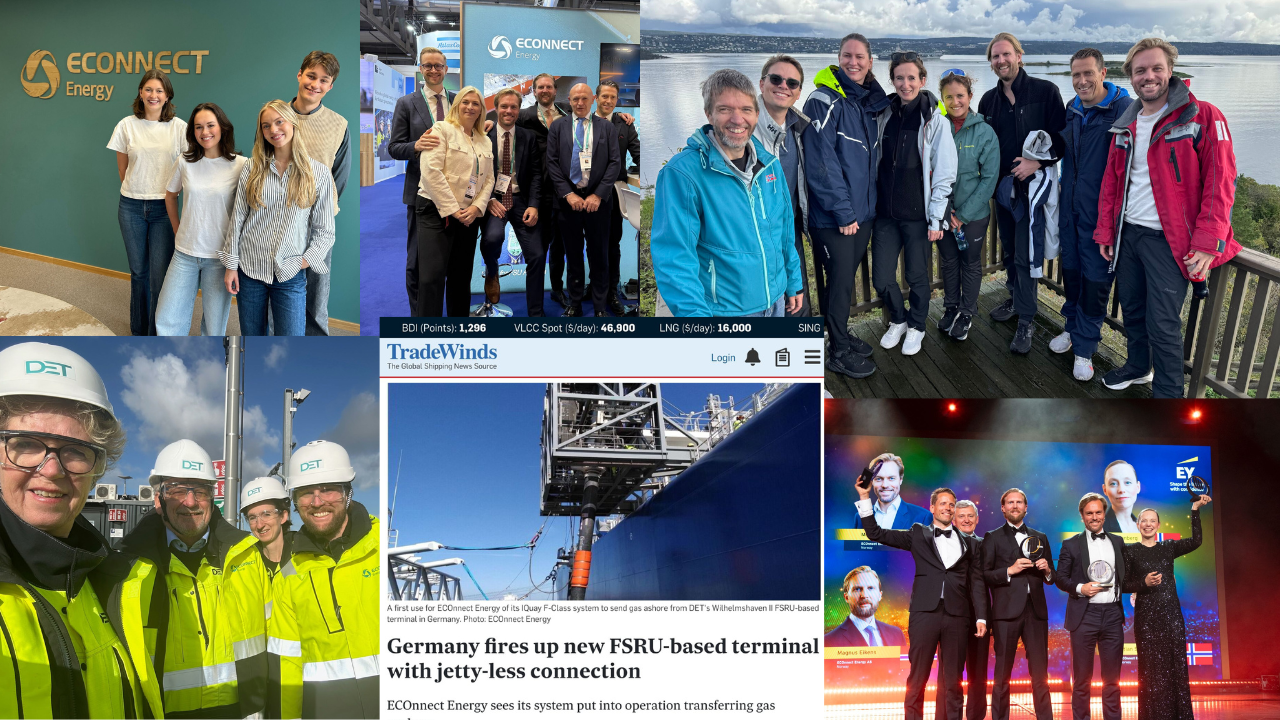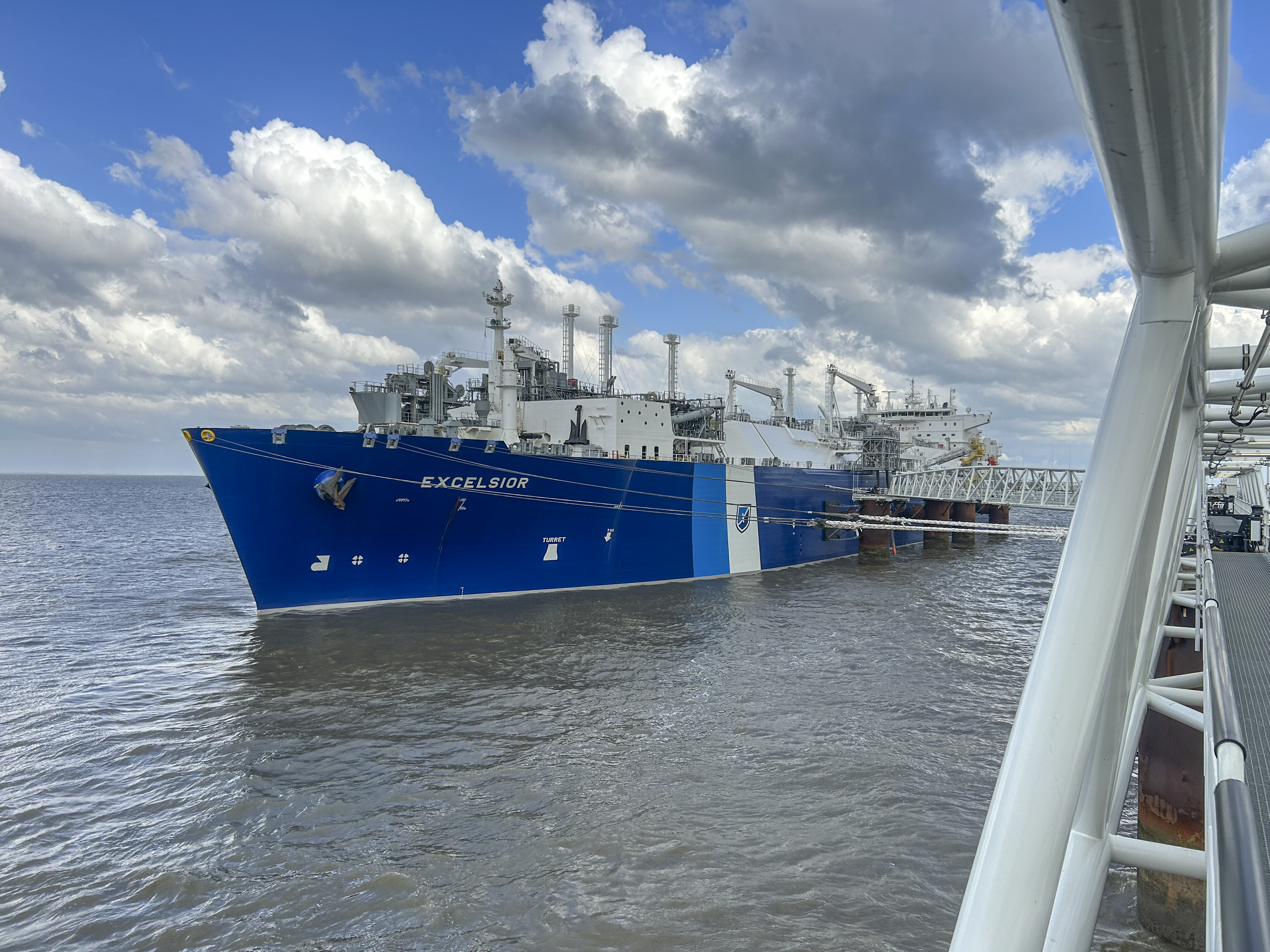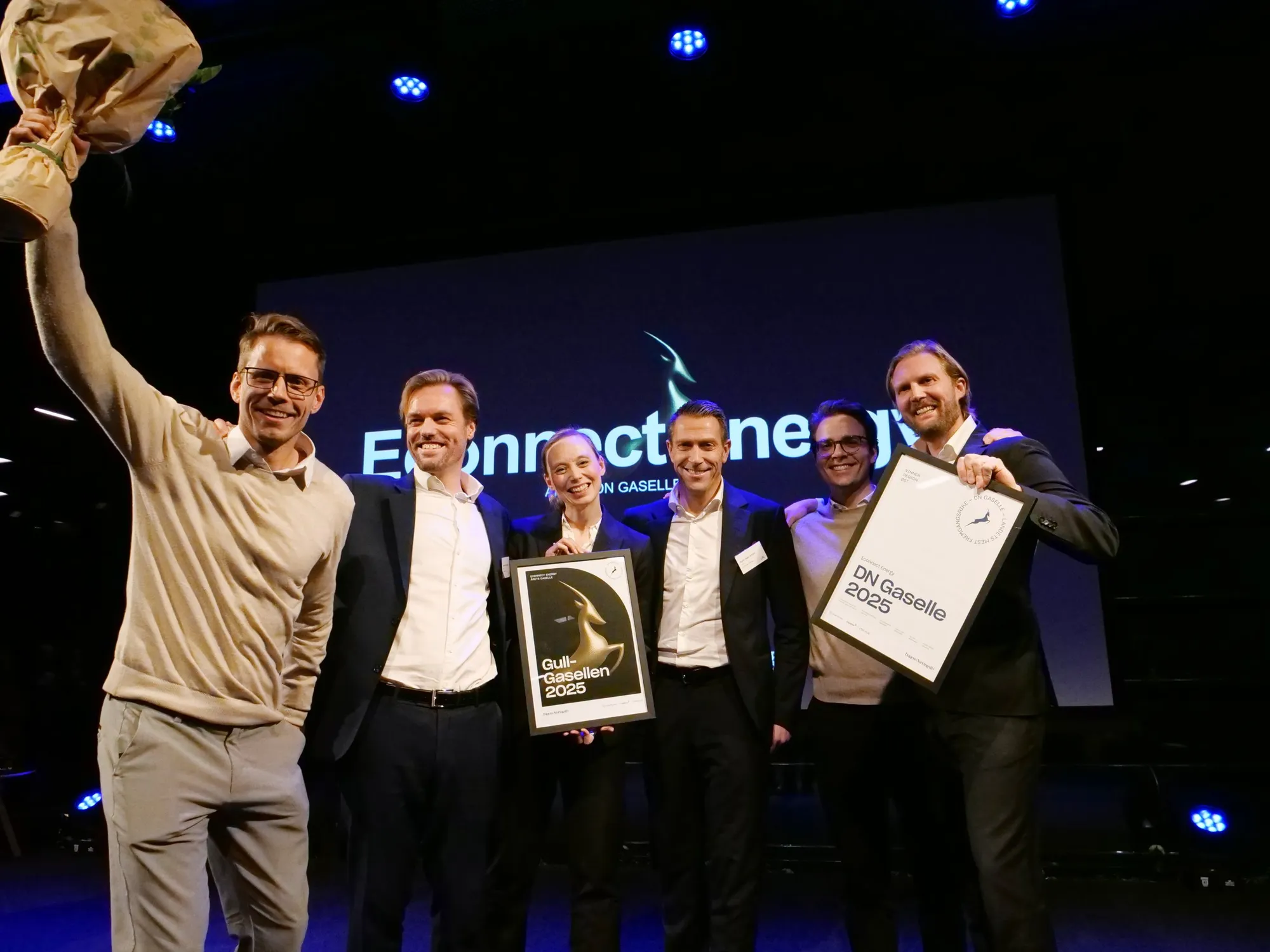Shipping transport produces around 940 million metric tonnes (Mt) of carbon dioxide (CO2) annually and is responsible for about 2.5% of global greenhouse gas (GHG) emissions. While 2.5% may seem like a small percentage of global emissions, a recent International Maritime Organization (IMO) study maintains that shipping emissions could increase between 50% and 250% by 2050, eroding the objectives of the Paris Agreement.
.jpg)
Ammonia – what is it, and how can it be applied to the energy and shipping sectors?
To decarbonise the shipping sector, ammonia (NH3) is seen as a promising alternative to current marine fuels. Ammonia has many applications; apart from agricultural, industrial and marine fuel use, ammonia can also be used for the energy storage of electricity produced by renewables.
Decarbonisation policy and potential for ammonia as a viable, zero carbon energy source
Ammonia production and uses
The volumetric energy density of ammonia is 150% of liquid hydrogen and these hydrogen densities can be achieved at near ambient storage conditions. Additionally, ammonia has lower explosive limits in air than pure hydrogen. Thus, ammonia is well positioned to store hydrogen and a growing demand for ammonia will increase the existing production and use of NH3.
Ammonia is categorized by the resulting carbon emission from the production into “brown”, “grey,” “blue” and “green” ammonia. The resulting product of NH3 of the four production methods is the same regardless of its classification. More sustainable, zero carbon production methods for a clean energy shift include blue and green production methods.
“Green” hydrogen is categorised as the cleanest of production methods, produced using renewable energy and electrolysis to split water. This differs from brown and grey hydrogen which is produced from coal and methane respectively, and blue hydrogen, which is produced in the same manner as grey hydrogen, but also uses CCS technology to capture and store the CO2 emissions.
Figure 1: Green Ammonia Production

Ammonia can be used as a vehicle to store and transport chemical energy, releasing energy either directly, or via the decomposition of ammonia to release hydrogen. The resulting hydrogen or ammonia-hydrogen combination then reacts with oxygen in the air to release energy.
Ammonia can be used as a transport fuel by engine combustion or by chemically reacting with oxygen in a fuel cell to produce electricity.
Ammonia can also be used to store thermal energy by capturing the energy in the transformation from solid to liquid to gas phase changes.
Additionally, the production and distribution infrastructure for ammonia is already mature at a large scale and can be adapted for a variety of new and promising purposes, such as for marine fuel. This existing network of infrastructure is a likely springboard for the general transportation of NH3. An increase in volume of NH3 distribution as bulk transfer is likely if NH3 consumption globally is to increase.

NH3 as a Marine Fuel, regulations, and infrastructure
Currently there are no regulations addressing the use of ammonia as fuel, and it is anticipated that DNV will publish a non-comprehensive ammonia “Fuel Ready Notation” effective for 2022. As there is an ongoing process for IMO to define NH3 as a fuel, there are currently no regulations for NH3 bunkering.
Ammonia has fewer challenges related to temperature due to its non-cryogenic boiling temperatures, its higher explosion limit and superior storage characteristics, compared to e.g. hydrogen and batteries. Storage tanks for liquefied NH3 pose little technical difficulties due to the fact that NH3 is in a liquid state at temperatures below -33.6°C at atmospheric pressure and at 10 bar, the condensation / boiling point is 25 °C. It is, however , a toxic substance, which can be lethal at even small concentrations. However, all fuels are hazardous to varying degrees, and ammonia presents a different set of hazards to the alternatives. It is less flammable than other fuels, so poses a lower fire risk and risks from cryogenic burns are lower than for liquid hydrogen or liquefied natural gas.
When adopting a long-term view of NH3 as a fuel source, DNV forecasts that “green ammonia, blue ammonia and bio-methanol are the most promising carbon-neutral fuels in the long run.” This suggests a mid-term reliance on LNG, and if ammonia becomes the leading fuel for the shipping industry by 2050, there will be extensive need for new bunkering infrastructure. The current ammonia infrastructure - currently 192 ports worldwide - is not sufficient for this demand and some ports will be retrofitted, but there will be a substantial need for additional flexible and scalable infrastructure. Constructing this infrastructure with conventional methods for bunkering, such as using jetties, represents significant costs and environmental interventions.
More development needed for ammonia as a marine fuel
The technological challenges for a future with an NH3 fuelled shipping industry lies in reduction of costs, hydrogen supply and infrastructure. As highlighted by Maersk in “Power-to-X and energy carriers for future carbon-neutral shipping”:
“The main challenge is not at sea but on land: Technology changes inside the vessels are minor when compared to the massive innovative solutions and fuel transformation that must be found to produce and distribute sustainable energy sources on a global scale”
Within a few years, it is expected that ammonia can both be burned directly in an internal combustion engine and to be used in fuel cells. For use in fuel cells, ammonia must be reconstituted into hydrogen to be used in low-temperature fuel cells. While still in the infancy of the development and commercialization of fuel cells, today’s fuel cells use hydrogen stored in ammonia. As NH3 is yet to be adopted as a marine fuel at scale, industry experts believe that the technologies under development should be demonstrated within a few years.
Ammonia can be transported by three different ship types, depending on how the cargo is stored: fully refrigerated (ambient pressure/-50C), semi-refrigerated (4-8 barg/-10C) and under pressure (17 barg/45C). Anhydrous ammonia is typically transported in gas carriers designed for liquefied petroleum (LPG), designed according to the requirements of the 2014 International Code for the Construction and Equipment of Ships Carrying Liquefied Gases in Bulk (IGC Code) transportation. Ammonia shares similar properties to propane such as e.g. saturated vapor pressure. Semi-refrigerated ammonia carriers typically have larger capacity than pressurized ammonia carriers. Minor adjustments are required to equip vessels to operate with ammonia as a fuel, as material compatibility requirements are well understood and it is straightforward to select suitable materials to avoid damage to onboard equipment, piping, valves and other fittings. They are also more flexible, e.g. in terms of filling ships with semi-refrigerated fuel tanks and have a limited cost premium.
Loading and unloading from terminals to ammonia-carrying vessels is currently handled safely with proper procedures and specialized training. NH3 is less flammable than other fuels, carrying a lower fire risk and risks from cryogenic burns are lower than for liquid hydrogen or liquefied natural gas. As ammonia gas is toxic and corrosive, the existing safety principles and systems used throughout the global ammonia industry will need to be adopted for the maritime sector with the addition of gas detection systems and appropriate chemically resistant protective cladding.

ECONNECT Energy’s Ammonia transfer solutions
ECONNECT Energy’s IQuay™ is easily adapted to safely transfer ammonia in bulk and for bunkering purposes. The universal design of the IQuay transfer system enables connection to any terminal and ship type according to specific needs. The transfer system floats, allowing for a high degree of flexibility and can be deployed quickly and without the environmental impact of building conventional marine infrastructure.
Similarly, as shipping fleets begin to adapt to NH3 as a marine fuel, there will be challenges in meeting the demand for NH3 infrastructure. The average lifecycle of cargo ships is anywhere between 20-26 years and it is expected that as older ships retire, newer cargo ships equipped with ammonia-burning internal combustion engines or ammonia fuel cells will replace older heavy fuel oil technologies. The IQuay can enable an increased demand for NH3 infrastructure to support a new fleet of ammonia-powered ships.
With the IQuay, ammonia can be exported from ammonia production facilities; imported for purposes of industrial use, or distributed for purposes of fuel or power production; or used for marine bunkering by using the IQuay as an interface between storage tanks and vessels.
The transfer of ammonia for bunkering purposes is similar to that of LNG, and using the IQuay as a bunkering interface confers the following advantages:
- Plug & Play: Turn-key bunkering infrastructure when combined with onshore storage.
- Universal: The loading system can be connected to a range of ship sizes and can be painlessly implemented into existing terminals.
- Cost-efficient: Significantly lower CAPEX compared to dedicated bunkering vessels.
- Safe: Rigorous safety standards are required when handling; the IQuay's extensive experience with strict safety standards from the LNG sector and dangerous goods makes it the perfect option for ammonia transfer.

Read more about ECONNECT Energy’s ammonia solutions.
References:
Argus Media, "Green Ammonia.” Accessed from: https://view.argusmedia.com/green-ammonia.html
Clean Tech Group, “Green Ammonia – Potential as an Energy Carrier and Beyond.” Accessed from: https://www.cleantech.com/green-ammonia-potential-as-an-energy-carrier-and-beyond/
DNV, “Maritime Forecast to 2050.” Accessed from: https://eto.dnv.com/2020/Maritime/forecast
The European Commission, “Reducing emissions from the shipping sector.” Accessed from: https://ec.europa.eu/clima/policies/transport/shipping_en
Environmental Defense Fund, “Sailing on Solar: Could green ammonia decarbonise international shipping?” (2019). Accessed from: https://europe.edf.org/file/399/download?token=agUEbKeQ
International Energy Association, “Annual direct CO2 emissions avoided per 1 GW of installed capacity by technology and displaced fuel” (2020). Accessed from: https://www.iea.org/data-and-statistics/charts/annual-direct-co2-emissions-avoided-per-1-gw-of-installed-capacity-by-technology-and-displaced-fuel
International Fertiliser Industry Association. “Sustainable Fertilizer Production” (2020). Accessed from: https://www.fertilizer.org/public/resources/publication_detail.aspx?SEQN=6145&PUBKEY=EBD17620-F6B5-47F3-A0D3-F8983B1921B6
MarineLink, “Ammonia Fuel Cells for Deep-Sea Shipping: A Key Piece of the Zero-emissions Puzzle” (2020). Accessed from: https://www.oedigital.com/news/483980-ammonia-fuel-cells-for-deep-sea-shipping-a-key-piece-of-the-zero-emissions-puzzle.
The Royal Society, “Ammonia: Zero Carbon Fertilizer, Fuel and Energy Store. A Policy Briefing.” (2020) Accessed from: https://royalsociety.org/-/media/policy/projects/green-ammonia/green-ammonia-policy-briefing.pdf
Wind Power Monthly, “Australia backs 26GW wind and solar powered green hydrogen hub” (Oct 2020) Accessed from: https://www.windpowermonthly.com/article/1698179/australia-backs-26gw-wind-solar-powered-green-hydrogen-hub
Yara Integrated Report 2020: https://www.yara.com/investor-relations/latest-annual-report/
This article was co-written by Stian T. Magnusson and Danielle Murphy-Cannella






